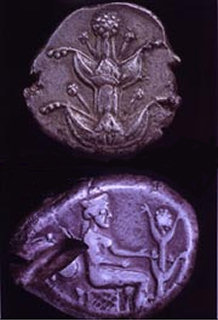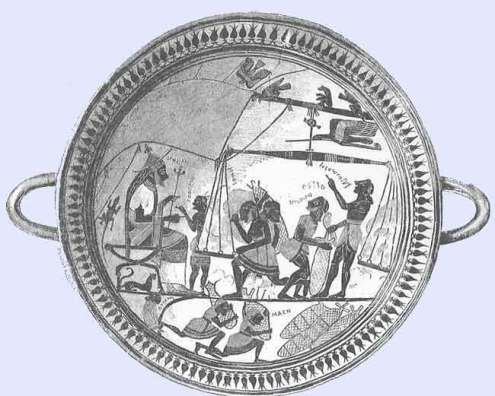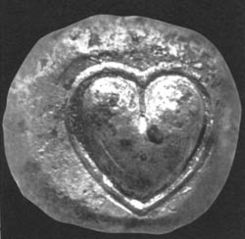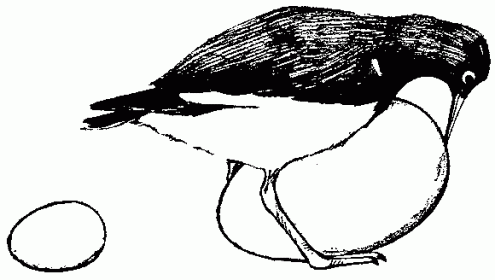The Vesper Lynd
This history of mixology is riddled with dubious tales of origin, of outlandish claims made by notable barkeeps, of contradictory accounts. But one notorious cocktail (which, by the way, is technically illegal to serve in several American states due to the fact that it requires the mixing of two liquors in one beverage) about which much is known is the elusive Vesper Lynd.
As with any vintage cocktail, countless variations on this drink have been committed to text over the decades. But the original recipe, created at the Boodle’s gentlemen’s club in London in the early 1950s, is as follows:
2 ounces of Boodle’s gin (originally sold only at the exclusive club of the same name)
1 ounce of Russian vodka
½ ounce of Lillet blanc (an orange liqueur)
These ingredients are to be shaken over ice and strained into a chilled cocktail glass. The glass is then garnished with a lemon twist. The final product is exquisite in both flavor and appearance. The qualities of the cocktail itself, however, are eclipsed in interest by the story surrounding the drink’s popularity. One notable member of the Boodle’s club (along with historical heavyweights such as David Hume, Adam Smith, and Sir Winston Churchill) was author Ian Fleming.
He was so taken by the barkeep’s concoction that he featured a version of the recipe is his first James Bond novel, Casino Royale. Bond, in the book, claims to have created the drink, and eventually names it the Vesper. This name derived from his untrustworthy love interest, Russian spy Vesper Lynd (her name being a pun on West Berlin). The mixing of English gin and Russian vodka signified the bond between the two spies. After Bond is betrayed by Lynd, he swears off the cocktail forever.
Although the original 1967 production of Casino Royale was a satirical treatment of the novel starring Peter Sellers as Bond and Ursula Andress as Versper, it was popular enough to place the Vesper martini into the cocktail cannon.
While many cocktails, ranging from the Mai Tai to the Churchill Martini, have excellent histories, the Vesper Lynd is, as far as I know, the only popular cocktail that was born out of the Cold War-Era tension between Capitalist and Communist alliegances.
Some Further Reading:
An interesting look at some different claims made regarding the invention of the Mai Tai
Weasel Coffee
Known as Kopi Luwak throughout much of Southeast Asia and popularly translated to English as weasel or civet coffee, this gourmet beverage is brewed from beans that have been eaten and defecated by the Asian palm civet.

The Asiam palm civet is not a member of the weasel family, but is commonly referred to by the Vietnamese word meaning weasel.
Palm civets have a taste for the ripe fruit of the coffee plant, known as coffee cherries. While the flesh of the fruit is broken down by the civets’ digestive tracts, the beans contained within the berries pass through the animals intact.

Clumps of coffee beans that have passed through civets.
The civets’ contribution to the palatability of the resulting beans is twofold. Since these animals are drawn to the ripest and most healthy coffee berries, their excrement is filled with the choicest beans. Secondly, the unique combination of digestive enzymes that the coffee beans are exposed to inside the civets reduces their natural bitterness. Washed thoroughly and then brewed as a light roast, these beans are said to produce some of the most delicious coffee in the world. The flavor is widely described as “sweet and smooth”.

Due to the scarcity and desirability of the beans, Kopi Luwak is often sold for several hundreds of dollars a pound, making it the world’s most expensive coffee.
Connoisseurs point out that, in addition to possessing a notably reduced bitterness, Kopi Luwak displays a complex bouquet of flavors not found in any other type of coffee. This is caused by the civets’ digestive enzymes penetrating the coffee beans and interacting with certain proteins contained within. The resulting palatability is a serendipitous side effect.
The use of animals to identify, gather, or alter morsels of food that are subsequently considered gourmet is seen in several other modern practices. Pigs used to locate truffles, hounds that aid bird hunters, and bees that convert flower nectar into honey all play an important role in human culinary tradition. But none aside from Asian palm civets can brag that gastronomes pay hundreds of dollars for sacks of their scrumptious shit.
Some Further Reading:
An article about the coffee from a Vietnam travel guide
An online shop selling weasel coffee beans, for those curious enough to try it for themselves
An article about an Australian café that serves Kopi Luwak for $50 a cup
The Lost Panacea of Silphium
 Native to the ancient Greek colony of Cyrene (located in modern day Libya), Silphium (also known as laser) is an extinct plant that, in its heyday, was one of the most treasured medicinal resources of the ancient world. Employed by cultures all around the Mediterranean, Silphium was used as a spice, a cure-all medicinal remedy, a form of birth control, and an agent for pregnancy abortion. Famed scholars ranging from Pliny the Elder to Herodotus to Theophrastus all wrote of Silphium’s legendary potency. Despite its widespread popularity, Silphium allegedly refused to grow anywhere aside from Cyrene. The colony became so closely identified with the plant that it appears on the settlement’s coins.
Native to the ancient Greek colony of Cyrene (located in modern day Libya), Silphium (also known as laser) is an extinct plant that, in its heyday, was one of the most treasured medicinal resources of the ancient world. Employed by cultures all around the Mediterranean, Silphium was used as a spice, a cure-all medicinal remedy, a form of birth control, and an agent for pregnancy abortion. Famed scholars ranging from Pliny the Elder to Herodotus to Theophrastus all wrote of Silphium’s legendary potency. Despite its widespread popularity, Silphium allegedly refused to grow anywhere aside from Cyrene. The colony became so closely identified with the plant that it appears on the settlement’s coins.

Silphium, here seen on Cyrene's coins, was the colony's chief export. The plant was notoriously resistant to cultivation, and is believed to have been harvested to extinction within the first few centuries AD.
Silphium was so strongly desired by various ancient civilizations that it was, at times, valued above currency. With some Romans contending that the plant was a gift from the god Apollo, its extinction was considered a great tragedy. Pliny even wrote that the last known Silphium plant was given to the Roman Emperor Nero himself.

An artifact from the 6th century believed to depict King Arcesilaus II of Cyrene overseeing the weighing of Silphium.
The Egyptians shared the Romans’ veneration of the plant, associating its with human love and sexuality. The Egyptian glyph signifying the heart portion of the soul, in fact, may have been meant to picture the seed of the Silphium plant. This character, known to the Egyptians as Ib, is likely the origin of our modern heart symbol.

Here is an ancient Cyrene coin bearing the image of a Silphium seed. Its likeness both to the Egyptian Ib and to the modern heart symbol is striking.
While the world has been without Silphium and its powers for well over a millennium, our modern culture still bears its mark. Every time a love-dazed youth carves a heart into a tree or inserts a whimsical, heart-shaped emoticon into an online conversation, the plant that once commanded a king’s ransom is winking at us from the ghostly recesses of the Earth’s past. Like the Dodo bird that gave us an insult implying stupidity or the dinosaur that inhabits every child’s imagination, Silphium’s potency is strong enough to overcome the silencing power of extinction itself.
Some Further Reading:
Some information about Silphium’s possible use as birth control and an abortifacient
An article entitled “Abortion in the Ancient and Premodern World”
An article about ancient methods of measurement, including brief mention of Silphium from Cyrene
An essay addressing the five parts of the Egyptian soul, including Ib
The Pitfalls of Supernormal Stimuli
“…(supernormal stimulus) refers to a paradoxical effect whereby animals show greater responsiveness to stimuli that differ substantially from the “natural” stimulus.”
– J.E.R. Staddon, Behavioral Psychologist
I recently learned of the writings of Dutch ethologist Nikolaas Tinbergen (1907-1988), who performed some fascinating experiments on birds, specifically oystercatchers.

Shorebirds found all across the globe, oystercatchers possess a hard-wired trait that caught Tinbergen’s attention. After laying several eggs, female oystercatchers are faced with the choice of which egg to brood atop, and thus incubate the enclosed embryo until its hatching. Since larger eggs are more likely to produce healthy chicks, these birds are programmed to select their largest eggs for brooding. This tendency produces very odd results, however, when it is exposed to supernormal stimuli. In this case, Tinbergen placed the much larger eggs of a totally different species of bird along side the oystercatchers’ eggs. Surprisingly, the oystercatchers hopped right atop these absurdly large eggs, ignoring their own.

Here is former Food and Drug Administration Commissioner David A. Kessler’s explanation of this counterintuitive behavior:
“From the standpoint of evolution, a bird’s preference for a larger egg over a smaller one makes sense. Smaller eggs are more likely to be nonviable, so birds that consistently choose them would not have been likely to survive as a species. Their preference for a giant egg is a logical extension of a preference for the egg that seems most likely to be viable.”
The power of the supernormal stimulus of egg size to hijack the oystercatchers’ ingrained survival mechanisms is strong enough to cause these birds to cuckold themselves, expending precious time and energy to bring another bird’s child into the world. While this effect is curious when observed among birds, its results are more startling when applied to humans. An oft-cited example of this is the contentious issue of the portrayal and attractiveness of female bodies. For example, throughout history many women have had their bodies altered to make their breast bigger or appear to be bigger, whether through body-molding clothing or, more recently, surgery and photo editing.

Venus of Willendorf is a limestone carving of a woman’s body discovered in Lower Austria. It is believed to date from 24,000 BCE – 22,000 BCE. Her breasts are swollen to absurd proportions.
The Venus of Willendorf carving shows that the issue of male attraction to exaggerated, unnatural female forms is nothing new. University of Cambridge archaeologist Paul Mellars observes that, “…(Venus of Willendorf) could be seen as bordering on the pornographic.” This is an example of how male attraction to breasts, although having originally coevolved with actual female breasts, can be triggered by portrayals of exaggerated and unnatural breasts.
Another illustration of how supernormal stimuli can kidnap ingrained human desires and redirect them toward artificial ends can be found on the menu of any fast food restaurant.

This chart compares the calories and fat contained in hamburgers served at some leading fast food chains
When competing for survival, pre-agricultural humans benefited greatly from eating as much animal fat as they could get their hands on due to its rich caloric content. As a result, the human tongue and brain grew to find fat quite palatable. In modern society it is much easier to gain access to fatty foods, but the tongue and brain can still be motivated by a primal desire to eat as much fat as possible, as if stockpiling calories in the face of potential periods of famine. In their book Understanding Nutrition, nutritionists Elli Whitney and Sharon Randy Rolfes claim that a healthy adult should consume 45 to 75 grams of fat each day. Many of the hamburgers on the above chart, however, exceed this daily amount despite the fact that they are meant to comprise just one meal (foods containing wildly inflated amounts of fat, salt, sugar, and so on are dubbed “hyperpalatable” by food scientists).
The overwhelming popularity of these restaurants (McDonald’s having famously served “billions and billions”) demonstrates how a human drive that originally aided survival now leads many to consume significantly more fat than their bodies require, potentially to the detriment of their health. These chain restaurants, however, are not fully to blame for selling such hyperpalatable food. As W. Philip T. James of the International Obesity Task Force points out, “It is little wonder that food manufacturers, responding to taste panels and sales returns, have focused, particularly in the last two decades, on providing this evolutionarily rare but highly prized sensory mix as a routine in an increasingly varied number of foods made for convenient consumption.”
There are many more examples of supernormal stimuli leading people to self-destructive behavior, ranging from drug addiction (certain drugs, such as cocaine, stimulate a massive release of dopamine in the brain, whereas dopamine is released in much smaller quantities under natural circumstances) to video game enthusiasts literally starving to death after playing World of Warcraft for days on end without interruption. The conclusion to be drawn is that, in order to enjoy the spoils of modern life healthfully in the face of ubiquitous supernormal stimuli, a certain resistance to one’s own chemical drives is neccessary. This is no easy task, however, since the brain is literally built to perceive the satisfaction of these desires as necessary for survival.
Some Further Reading:
A very interesting article about how supernormal stimulus is used in product marketing



